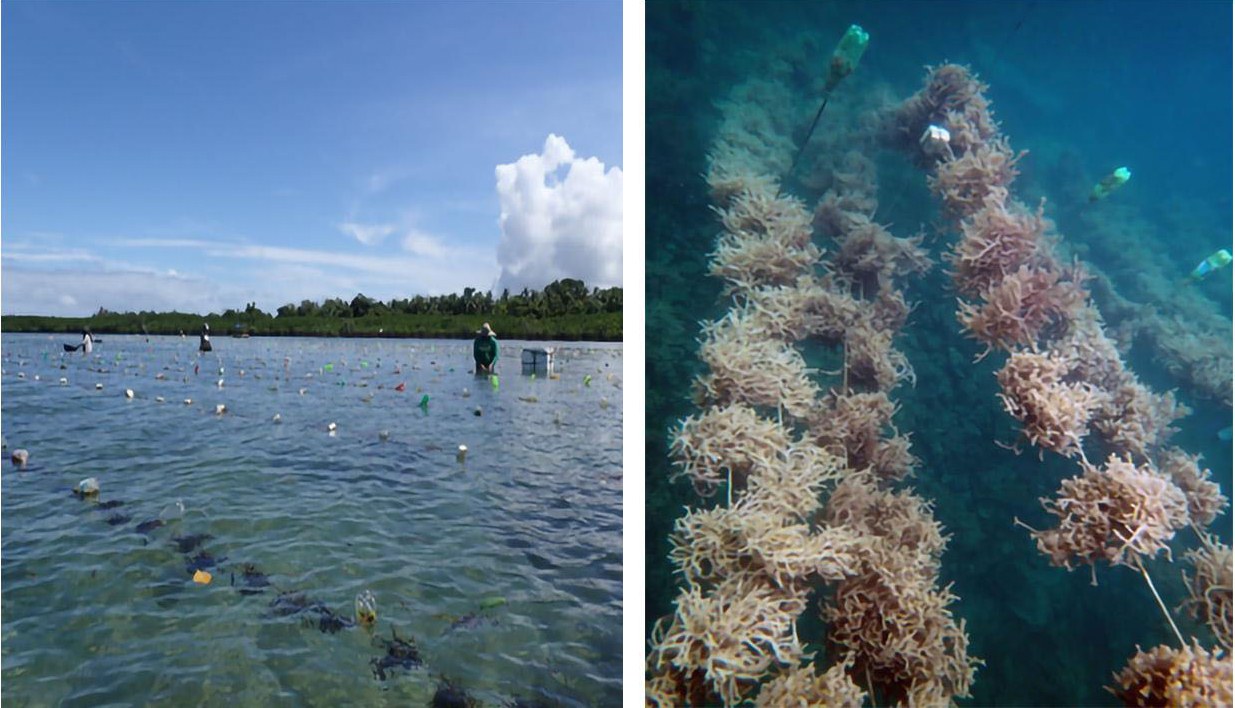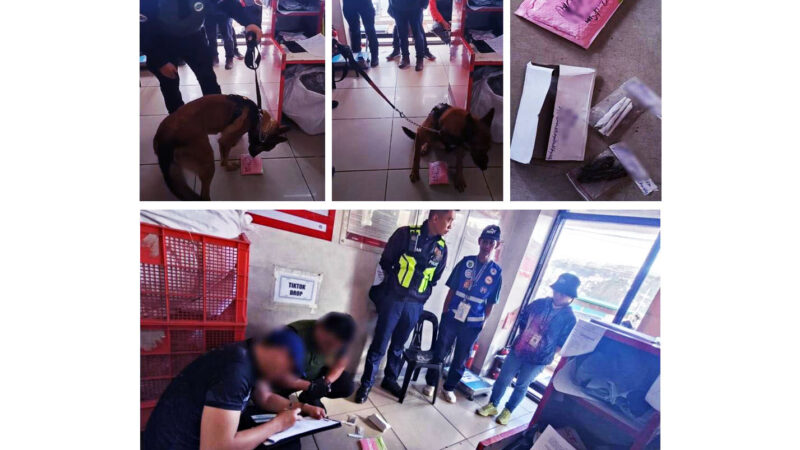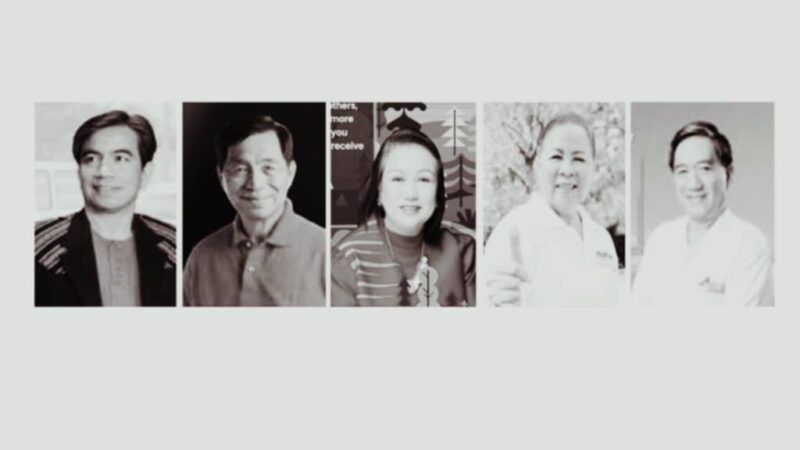Seaweed as a Resilient Food Solution After a Nuclear War

(Left photo) Shallow water seaweed farming in the lower intertidal flat using long lines in Bohol, Philippines. (r) Seaweed farming using long lines submerged 1 – 2m below the air-water interface in the subtidal approximately 5m depth in Quezon Province, Philippines. Photo copyright MYRoleda AlgaE Lab.
Diliman, QC: A new study about the potential of seaweed as a resilient food source was published in the scientific journal “Earth’s Future” by a team of researchers from the Alliance to Feed the Earth in Disasters (ALLFED), Louisiana State University, University of the Philippines Diliman Marine Science Institute (UP MSI), and the University of Canterbury.
Researchers have discovered that seaweed can be a crucial pillar for food security in the context of abrupt sunlight reduction scenarios, as seen in scenarios like nuclear winter. Surprisingly, seaweed is resilient in adverse conditions, so its growth and potential to enhance food security increases after more severe nuclear conflicts.
Using an empirical model based on the seaweed Gracilaria tikvahiae, in combination with nuclear winter climate data, the researchers simulated global seaweed growth. The results demonstrate that seaweed has the capacity to be cultivated in tropical oceans even after a major nuclear war between Russia and the US. Such a war would deliver 150 Tg of black carbon to the atmosphere and could block out the sunlight for years but enough to drive photosynthesis. This scenario leads to increased vertical mixing and decreased phytoplankton production, providing more nutrients to the seaweed.
Previous studies show that agriculture and fisheries production would plummet, so alternative food sources like seaweed will be critical in ensuring good security in sunlight reduction scenarios. Ocean modeler Prof. Cheryl Harrison from the Louisiana State University said “It’s only a matter of time before the latter [nuclear war and large volcanic eruption] happens, so we need to be ready. Because the ocean does not cool as rapidly as land, marine aquaculture is a very good option.”
Seaweed can be quickly scaled up to meet a substantial portion of global food application demand, reaching about 70% within just 7 to 13 months. Most of this can be used for animal feed and biofuel, as human consumption is limited to 10-15 % due to the high iodine content in seaweed, which could cause adverse health effects.
In addition to the current benefits of seaweed farming, researchers suggest investing in seaweed farming as a proactive measure for global food security, both now and after a catastrophe. This could potentially avert a significant number of deaths from starvation, according to resilient food expert Prof. Dr. David Denkenberger from the University of Canterbury.
In fact, in the Philippines, low-tech seaweed farming is the most commonly implemented infrastructure.
According to laboratory head Prof. Michael Y. Roleda of Algal Physiology (AlgaE) laboratory of UP MSI, “We are engaged in the selection and curation of novel and climate change resilient cultivars of tropical seaweeds (e.g., eucheumatoids and gracilariods) that possess superior traits in terms of growth, chemistry, and disease resistance. The gene bank of UP-MSI provides a platform for selective breeding and production of high-quality seed stock for distribution to seaweed farmers.” This effort by UP MSI significantly contributes to the goal of scaling up seaweed for future food production and security.
The preprint of this study was selected as one of the most exciting and interesting entries out of 17,000 submissions to the European Geosciences Union conference in Vienna (2023) and discussed in their press conference and blog. According to Lead author Dr. Florian Ulrich Jehn from ALLFED, this study opens avenues to further research about seaweed as a food solution after a nuclear war. ### (PR)







